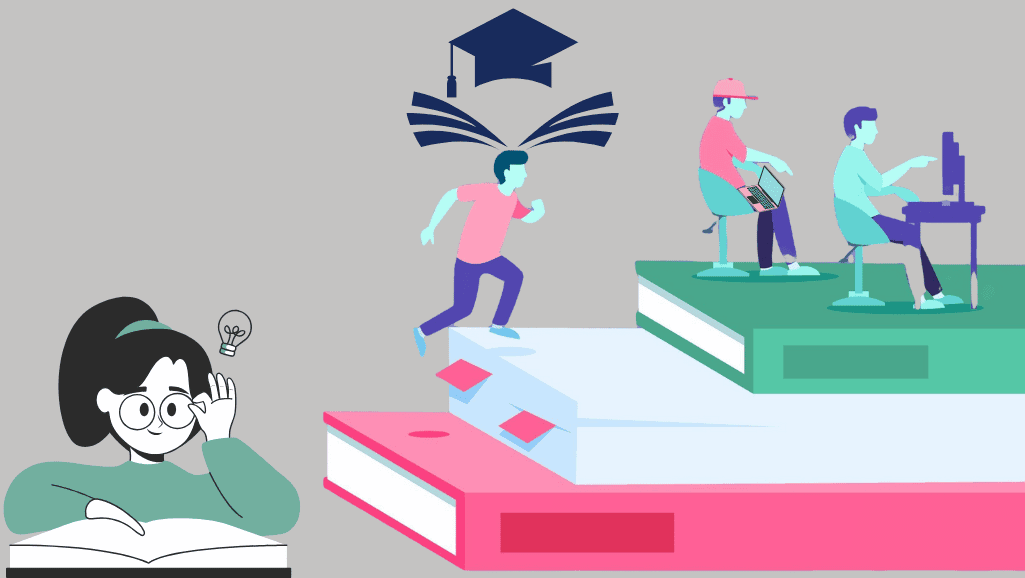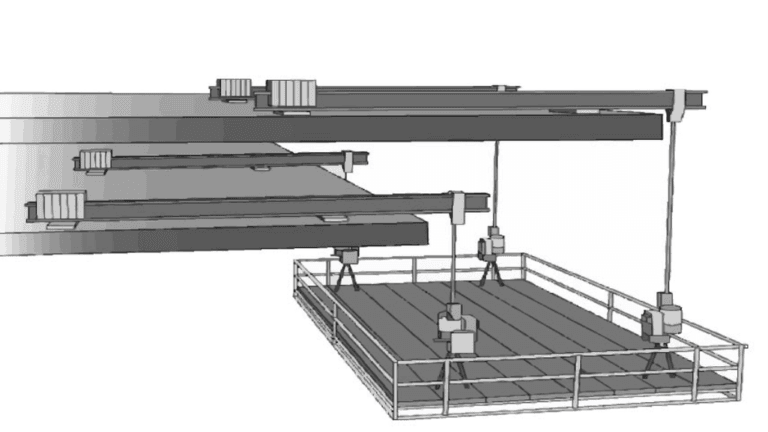Phone:
(+65)8319-0742
When it comes to effective teaching strategies, instructional scaffolding in education plays a vital role in supporting student learning and fostering success. By providing targeted guidance and assistance, educators can help students bridge the gap between what they already know and what they need to learn. This temporary support system is essential for helping students progress from dependence on assistance to achieving independent mastery. In this article, we will delve into the 4 Types of Scaffolding in Education, highlighting their significance and impact on student development.
Key Takeaways
- Scaffolding in education is an instructional method that supports students as they learn new concepts.
- The four main types of scaffolding in education include sensory scaffolding, graphic scaffolding, interactive scaffolding, and technological scaffolding.
- Sensory scaffolding utilizes physical and visual elements, manipulatives, and visual aids to enhance student learning.
- Graphic scaffolding involves the use of visual tools such as mind maps, graphic organizers, and anchor charts to help students comprehend complex ideas.
- Interactive scaffolding promotes collaboration and interaction among students, fostering peer learning and engagement.
- Technological scaffolding leverages educational technology and online resources to provide personalized support and resources.
- Scaffolding is crucial in teaching as it enhances student engagement, improves retention of information, and supports the development of independent learning skills.
Sensory Scaffolding in Education
Sensory scaffolding is a powerful instructional approach that leverages physical and visual elements, manipulatives, and visual aids to enhance student learning. By engaging multiple senses, this approach helps students better understand and internalize abstract concepts. Let’s explore the various components that make sensory scaffolding highly effective in the educational setting.
Manipulatives and Visual Aids
One key aspect of sensory scaffolding is the use of manipulatives and visual aids. These hands-on materials and visuals provide tangible representations of abstract ideas, making them more accessible and relatable for students. For example, when teaching addition and subtraction, teachers can use counters or blocks to aid students in physically manipulating quantities and visualizing the mathematical operations.
Modeling for Clarity
Another crucial element of sensory scaffolding is modeling. By demonstrating concepts or skills in front of the class, teachers provide students with a visual representation of what is being taught. This modeling allows students to observe the step-by-step process, facilitating their understanding of the task or concept. Through modeling, students can see the ‘big picture’ and how different elements connect, promoting a deeper comprehension of the subject matter.
Engaging Physical and Visual Elements
Sensory scaffolding also capitalizes on the power of physical and visual elements in the learning process. By incorporating elements such as color, texture, and spatial organization, teachers create a stimulating environment that promotes active engagement and retention of information. For instance, arranging visual aids in a visually appealing manner or using color-coded materials can help students make meaningful connections and enhance their understanding.
Through sensory scaffolding, educators harness the strengths of different sensory modalities to support student learning. The combination of manipulatives and visual aids, modeling, and engaging physical and visual elements creates a rich and immersive learning experience, maximizing students’ comprehension and knowledge retention.
Graphic Scaffolding in Education

Graphic scaffolding is a powerful instructional technique that utilizes visual tools to aid students in understanding complex ideas and drawing connections between abstract concepts. By employing mind maps, graphic organizers, and anchor charts, educators create a structured framework that supports student learning and enhances comprehension.
Mind maps are visual diagrams that represent information in a hierarchical and interconnected manner. They allow students to organize their thoughts, establish relationships between ideas, and identify key concepts. By visually mapping out their understanding, students gain clarity and can more effectively retain information.
Graphic organizers provide students with a visual representation of knowledge, helping them comprehend and analyze complex topics. These organizers come in various formats, such as Venn diagrams, flowcharts, and concept maps. Students can use graphic organizers to categorize information, identify patterns, and synthesize ideas, ultimately deepening their understanding of the subject matter.
Anchor charts are visual displays that serve as a reference tool during instruction. These charts are typically created with students and act as a visual reminder of key concepts, strategies, or vocabulary. Anchor charts support students in making connections and provide a helpful resource for independent work.
In addition to aiding comprehension, graphic scaffolding extends to reading strategies. Visual cues and graphic organizers are effective tools for guiding students in their reading and analysis of texts. By using graphic organizers, students can identify main ideas, visualize story structure, and make predictions. This approach enhances reading comprehension and critical thinking skills.
Benefits of Graphic Scaffolding
Graphic scaffolding offers numerous benefits for student learning:
- Enhanced comprehension: Visual tools provide students with a clear structure for organizing and connecting information, leading to improved understanding.
- Increased engagement: The use of visual aids captivates students’ attention and encourages active participation in the learning process.
- Promotion of critical thinking: Graphic scaffolding prompts students to analyze, evaluate, and synthesize information, fostering higher-order thinking skills.
- Support for diverse learners: Visual tools accommodate various learning styles and help students with different abilities access and internalize content.
Example of Graphic Scaffolding

To illustrate the practical application of graphic scaffolding, consider the following example in a science classroom:
A teacher is introducing the concept of the water cycle. The teacher starts by creating a mind map on the board, labeling the main components of the water cycle. As a class, students brainstorm and add related subtopics to the mind map, such as evaporation, condensation, precipitation, and collection. This visual representation of the water cycle provides a comprehensive overview and helps students grasp the interconnectedness of the different stages.
Afterward, the teacher distributes graphic organizers to each student. The graphic organizers feature the main stages of the water cycle, and students are instructed to fill in the specific processes and key details for each stage. This guided practice allows students to reinforce their understanding and develop a more thorough comprehension of the water cycle.
As a culminating activity, the teacher creates an anchor chart displaying the water cycle and its key components. The chart is placed in a prominent location in the classroom, serving as a reference point throughout the unit and supporting students in their independent exploration and application of the water cycle concept.
| Benefits of Graphic Scaffolding | Example of Graphic Scaffolding |
|---|---|
|
|
Interactive Scaffolding in Education
Interactive scaffolding in education emphasizes collaborative learning and fosters interaction among students. Through various strategies, such as think-pair-share and jigsaw groups, interactive scaffolding promotes engagement and peer learning, facilitating the exchange of ideas and knowledge.
One effective method of interactive scaffolding is the think-pair-share strategy. Here, students discuss a topic or question with a partner before sharing their thoughts with the whole class. This strategy encourages active participation, enhances communication skills, and allows students to benefit from each other’s perspectives.
Jigsaw groups are another valuable interactive scaffolding technique. In this approach, students work in small groups, with each group member responsible for learning and teaching a specific part of the lesson. This cooperative learning strategy promotes teamwork, encourages shared responsibility, and reinforces understanding through peer teaching.
Peer learning and group discussions are integral components of interactive scaffolding. These activities provide opportunities for students to collaborate, share their ideas, and contribute to each other’s learning. Through collaborative efforts, students develop critical thinking skills, gain new perspectives, and enhance their overall understanding of the subject matter.
| Strategies | Description |
|---|---|
| Think-Pair-Share | Students discuss a topic with a partner before sharing with the whole class, promoting active participation and communication skills. |
| Jigsaw Groups | Students work in small groups, with each member responsible for learning and teaching a specific part of the lesson, fostering cooperation and peer teaching. |
| Peer Learning | Group discussions and collaboration among students encourage the exchange of ideas, critical thinking, and a deeper understanding of the subject matter. |
Technological Scaffolding in Education

Technological scaffolding in education leverages the power of educational technology, online resources, and adaptive learning platforms to provide enhanced support for student learning. By integrating technology into the educational process, teachers can create dynamic and engaging learning experiences tailored to students’ individual needs and abilities.
One key aspect of technological scaffolding is the use of interactive websites that offer interactive lessons, quizzes, and simulations. These websites allow students to actively participate in their learning, reinforcing key concepts and promoting deeper understanding. Educational apps are also valuable tools in technological scaffolding, offering a wide range of interactive activities, practice exercises, and educational games that cater to diverse learning styles.
Adaptive learning platforms play a crucial role in technological scaffolding by personalizing instruction based on students’ unique strengths and areas for improvement. These platforms use advanced algorithms and analytics to assess students’ performance and provide tailored content and support. With adaptive learning platforms, students can progress at their own pace, focusing on areas where they need additional assistance or challenge.
In addition to interactive websites, educational apps, and adaptive learning platforms, online resources play a vital role in technological scaffolding. Online libraries, digital textbooks, and multimedia resources provide students with a wealth of information and different formats to explore and deepen their understanding of various subjects.
The Role of Technological Scaffolding
Technological scaffolding empowers students to take ownership of their learning journey while providing them with the necessary scaffolds to succeed. By leveraging educational technology and online resources, teachers can create a supportive and engaging learning environment that caters to the diverse needs of their students.
This type of scaffolding offers numerous benefits, including:
- Personalized Instruction: By using adaptive learning platforms, students receive tailored content and support based on their individual strengths and weaknesses.
- Enhanced Engagement: Interactive websites, educational apps, and multimedia resources captivate students’ attention, making learning enjoyable and promoting active participation.
- Flexibility and Accessibility: Online resources and educational technology allow students to access learning materials anytime and anywhere, accommodating various learning styles and preferences.
- Progress Tracking: Technological scaffolding provides valuable insights into students’ progress, enabling teachers to identify areas for intervention and improvement.
Technological Scaffolding in Action

Here’s an example of how technological scaffolding can be applied in a classroom setting:
| Subject | Technological Scaffolding Tools |
|---|---|
| Math |
|
| Science |
|
| Language Arts |
|
Technological scaffolding unleashes the potential of educational technology, online resources, and adaptive learning platforms to support student learning and foster their academic growth. By embracing the power of technology, teachers can create engaging and personalized learning experiences that empower students to reach their full potential.
Importance of Scaffolding in Teaching
Scaffolding is a vital instructional approach that plays a significant role in teaching. It offers numerous benefits to both educators and students, ultimately fostering a more effective and engaging learning environment.
Enhanced Student Engagement
Scaffolding techniques actively involve students in the learning process, promoting higher levels of engagement. By providing support and guidance tailored to individual student needs, scaffolding ignites curiosity and encourages active participation. Students are more likely to be motivated and enthusiastic about their education when they feel empowered and supported in their learning journey.
Improved Retention of Information
One of the key advantages of scaffolding is its ability to enhance the retention of information. By breaking down complex concepts into smaller, more manageable units, scaffolding provides students with a solid foundation of knowledge. This foundation serves as a basis for building new understandings, ensuring that information is comprehensively retained and can be applied in future learning tasks.
Development of Independent Learning Skills
Scaffolding gradually transitions students from a dependent learning state to one that cultivates independence. By offering appropriate levels of support and gradually reducing it as students develop their skills, scaffolding empowers learners to take ownership of their education. This process helps students develop critical thinking, problem-solving, and self-regulation skills necessary for independent learning and success beyond the classroom.
Summary
Scaffolding in teaching is of utmost importance as it enhances student engagement, improves information retention, and supports the development of independent learning skills. By incorporating scaffolding techniques into instructional practices, educators effectively bridge the gap between students’ existing knowledge and what they need to learn. This approach nurtures a sense of curiosity, enables students to retain information effectively, and fosters the growth of independent learners who are confident in their abilities.
Examples of Scaffolding in the Classroom
Scaffolding can take various forms in the classroom, depending on the subject and instructional goals. Here are some practical examples of how teachers can implement scaffolding techniques to support student learning:
Math Lesson:
In a math lesson, a teacher may start by reviewing the basic concepts and building on students’ prior knowledge before introducing a new topic. For example:
- Using manipulatives, such as blocks or counters, to help students grasp the concept of addition or subtraction.
- Using visuals, like number lines or diagrams, to illustrate the steps in solving equations.
- Providing guided practice exercises with step-by-step instructions to reinforce understanding.
- Gradually reducing support as students demonstrate independent problem-solving skills.
Reading Comprehension:
When teaching reading comprehension, teachers can use scaffolding techniques to help students gain a deeper understanding of the text. For example:
- Using graphic organizers, like story maps or Venn diagrams, to help students visualize and organize key information.
- Modeling effective reading strategies, such as predicting, summarizing, and questioning, to guide students’ thinking.
- Encouraging peer discussions and collaborative learning to foster deeper analysis and interpretation of the text.
- Gradually transitioning to independent reading tasks where students apply the learned strategies.
By employing these scaffolding strategies, teachers provide the necessary support and guidance to help students develop their knowledge and skills. The gradual release of responsibility empowers students to become independent learners, capable of applying their learning in various contexts.
Applying Scaffolding Techniques
When it comes to applying scaffolding techniques in education, teachers play a crucial role in assessing their students’ prior knowledge and identifying any learning gaps that may exist. By understanding the individual needs of their students, teachers can tailor their instruction to provide targeted support and guidance, ensuring effective learning experiences.
Scaffolding techniques can encompass a variety of strategies that help students gradually build their understanding and skills. Some effective techniques include:
- Modeling: Teachers demonstrate how to approach a task or solve a problem, providing students with a clear example to follow.
- Guided practice: Teachers offer step-by-step support and feedback as students apply newly learned concepts or skills.
- Visual aids: Utilizing visual aids, such as diagrams, charts, or illustrations, helps students better understand abstract concepts and make connections.
- Collaborative learning: Creating opportunities for students to work together, engage in discussions, and learn from one another fosters a collaborative and supportive learning environment.
By adapting these scaffolding techniques to the specific learning goals and student needs, teachers can effectively scaffold the learning process. This ensures that students receive the necessary support to bridge the gap between what they already know and what they need to learn.
Applying scaffolding techniques in education aids in students’ comprehension, engagement, and retention of information. It empowers them to become active learners, develop problem-solving skills, and build confidence in their abilities.
Evaluating Scaffolding in Education
Teachers play a crucial role in ensuring effective scaffolding in education. Evaluating the impact of scaffolding strategies is essential to assess student progress, make informed instructional decisions, and promote continuous improvement.
Teachers can evaluate scaffolding techniques through various methods:
- Formative Assessments: These ongoing assessments provide valuable insights into student understanding and progress. Teachers can use quizzes, exit tickets, or quick discussions to gauge comprehension levels and identify areas where additional support is needed.
- Observations: Observing students’ engagement, participation, and problem-solving skills during scaffolded activities helps teachers assess their level of scaffolding effectiveness. By closely monitoring students’ interactions with the scaffolds, teachers can identify strengths and areas for improvement.
- Student Feedback: Soliciting feedback directly from students allows teachers to gain insights into their learning experiences and the impact of scaffolding. Surveys, reflections, or group discussions can provide valuable information about students’ perceptions of the effectiveness of the scaffolding techniques employed.
Based on the evaluation, teachers can adjust their scaffolding strategies to better meet students’ needs. By making thoughtful adaptations to the scaffolds, teachers can ensure that students receive the appropriate level of support to achieve their learning goals.

Here is an example table that demonstrates how teachers can evaluate scaffolding techniques:
| Evaluation Method | Benefits | Limitations |
|---|---|---|
| Formative Assessments |
|
|
| Observations |
|
|
| Student Feedback |
|
|
Regular evaluation, assessment, and adjustments in scaffolding strategies ensure that students receive the right level of support at each stage of their learning journey. By continuously refining their scaffolding practices, teachers can optimize student progress, promote independent learning, and foster a positive educational experience.
What is Scaffolding in Education?
Benefits of Scaffolding in Education
Scaffolding in education offers a multitude of benefits that significantly enhance student learning and understanding. Here are some of the key advantages:
Improved Student Understanding: By building on their prior knowledge and experiences, scaffolding helps students gradually increase their understanding of new concepts and skills. This method ensures that students grasp the material more thoroughly.
Increased Independence: Scaffolding provides temporary support and guidance, which is gradually reduced as students become more confident and autonomous in their learning process. This fosters a sense of independence and self-reliance.
Enhanced Critical Thinking: Scaffolding encourages students to think critically and draw relationships between new and existing knowledge. This approach not only helps in understanding the material but also in applying it in different contexts.
Better Retention: Active engagement in the learning process through scaffolding helps students retain information more effectively. By breaking down complex concepts into manageable parts, students can better remember and apply what they have learned.
Support for Diverse Learning Styles: Scaffolding can be adapted to cater to diverse learning styles and abilities, ensuring that all students receive the support they need to succeed. This flexibility makes it an inclusive teaching strategy that benefits every learner.
Types of Scaffolding in Educational Settings
There are several types of scaffolding that educators can employ to support student learning in various educational settings. Each type serves a unique purpose and can be tailored to meet the specific needs of students.
Procedural Scaffolding
Procedural scaffolding involves providing students with step-by-step instructions and guidance on how to complete a task or project. This type of scaffolding is particularly useful for students who are new to a subject or skill, as it offers a clear and structured approach to learning. By breaking down tasks into smaller, manageable steps, procedural scaffolding helps students understand the process and develop the skills needed to complete the task independently.
Conceptual Scaffolding
Conceptual scaffolding focuses on providing students with support and guidance on key concepts and ideas. This type of scaffolding is especially beneficial for students who are struggling to understand complex concepts or ideas. By offering a clear and structured approach to learning, conceptual scaffolding helps students grasp the essential elements of a subject. This method often involves the use of visual aids, analogies, and examples to make abstract concepts more concrete and understandable.
By employing these types of scaffolding, educators can create a supportive learning environment that caters to the diverse needs of their students. This approach not only helps students grasp key concepts but also fosters their overall academic growth and development.
Conclusion
Scaffolding is an essential instructional method in education that supports student learning and promotes success. It provides targeted support to students as they navigate new concepts and gradually removes that support as their skills develop. By bridging the gap between what students already know and what they need to learn, scaffolding enhances student engagement, retention of information, and the development of independent learning skills.
Through the application of various scaffolding techniques, teachers can create a supportive learning environment that fosters student growth and achievement. Sensory scaffolding utilizes manipulatives and visual aids to provide hands-on experiences and enhance understanding. Graphic scaffolding employs visual tools like mind maps and graphic organizers to help students make connections and organize information. Interactive scaffolding promotes collaboration and interaction among students, facilitating the exchange of ideas and peer learning. Technological scaffolding harnesses the power of educational technology and online resources to personalize instruction and provide additional support.
As teachers assess student progress and adjust their scaffolding strategies, they can ensure that the support provided is appropriate and promotes continued growth. Scaffolding not only helps students acquire new knowledge but also cultivates independent thinking and problem-solving skills. By implementing scaffolding effectively, educators empower students to become active learners and take ownership of their education, ultimately fostering their success in the classroom and beyond.
Frequently Asked Questions
What is scaffolding in education?
Scaffolding in education is an instructional method used by teachers to support students as they learn new concepts. It provides the necessary guidance and support to help students bridge the gap between what they already know and what they need to learn.
What are the 4 types of scaffolding in education?
The four main types of scaffolding in education include sensory scaffolding, graphic scaffolding, interactive scaffolding, and technological scaffolding.
How does sensory scaffolding support student learning?
Sensory scaffolding involves the use of physical and visual elements, manipulatives, and visual aids to support student learning. These can include hands-on materials and modeling to help students understand abstract concepts.
What is graphic scaffolding in education?
Graphic scaffolding in education involves the use of visual tools, such as mind maps, graphic organizers, and anchor charts, to help students draw relationships between abstract concepts and organize information.
How does interactive scaffolding work in education?
Interactive scaffolding focuses on collaboration and interaction among students. It includes strategies like think-pair-share and jigsaw groups, which promote discussions and peer learning to support student engagement.
What is technological scaffolding in education?
Technological scaffolding utilizes educational technology and online resources to support student learning. It includes the use of interactive websites, educational apps, and adaptive learning platforms to provide personalized instruction.
Why is scaffolding important in teaching?
Scaffolding plays a crucial role in teaching as it enhances student engagement, improves retention of information, and supports the development of independent learning skills.
Can you provide examples of scaffolding in the classroom?
Examples of scaffolding in the classroom can include starting a lesson by reviewing previous knowledge, using manipulatives and visuals to support understanding, and gradually removing support as students demonstrate independent comprehension.
How can scaffolding techniques be applied in education?
Scaffolding techniques can be applied by tailoring instruction to meet the needs of individual students or groups, using modeling and guided practice, providing visual aids, and facilitating collaborative learning experiences.
How should scaffolding be evaluated in education?
Scaffolding should be evaluated through formative assessments, observations, and student feedback. Ongoing evaluation ensures that the scaffolding provided is appropriate for students’ understanding and promotes continued growth.
What is the summary of scaffolding in education?
Scaffolding in education is an essential instructional method that supports student learning by providing targeted support and gradually removing it as students develop their skills. It creates a supportive learning environment that fosters student growth and achievement.


















